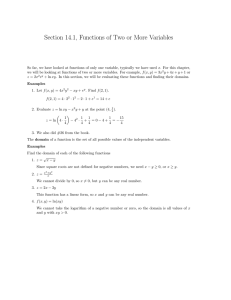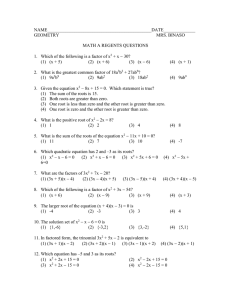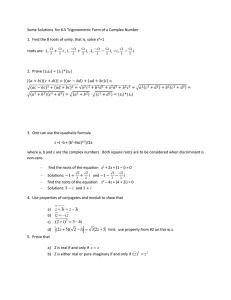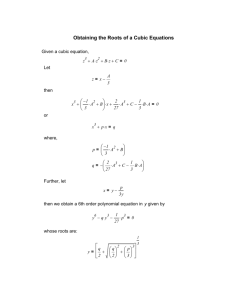Name ________________________________________ Date ____________ Algebra II - Pd ___
advertisement
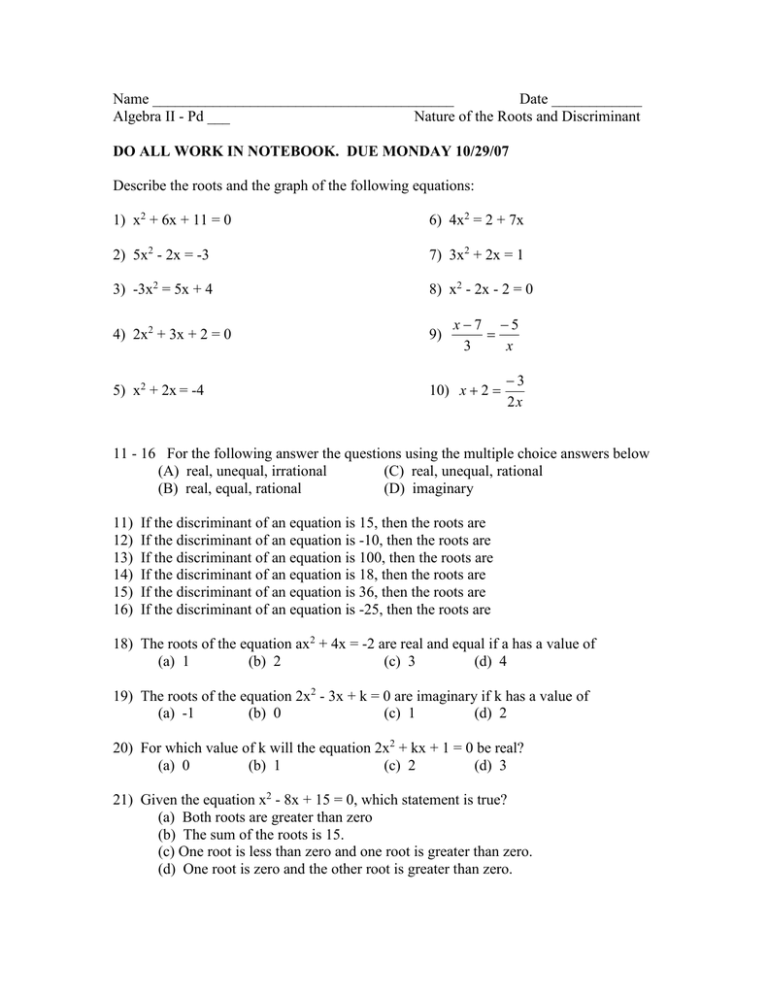
Name ________________________________________ Date ____________ Algebra II - Pd ___ Nature of the Roots and Discriminant DO ALL WORK IN NOTEBOOK. DUE MONDAY 10/29/07 Describe the roots and the graph of the following equations: 1) x2 + 6x + 11 = 0 6) 4x2 = 2 + 7x 2) 5x2 - 2x = -3 7) 3x2 + 2x = 1 3) -3x2 = 5x + 4 8) x2 - 2x - 2 = 0 4) 2x2 + 3x + 2 = 0 9) 5) x2 + 2x = -4 10) x 2 x7 5 3 x 3 2x 11 - 16 For the following answer the questions using the multiple choice answers below (A) real, unequal, irrational (C) real, unequal, rational (B) real, equal, rational (D) imaginary 11) 12) 13) 14) 15) 16) If the discriminant of an equation is 15, then the roots are If the discriminant of an equation is -10, then the roots are If the discriminant of an equation is 100, then the roots are If the discriminant of an equation is 18, then the roots are If the discriminant of an equation is 36, then the roots are If the discriminant of an equation is -25, then the roots are 18) The roots of the equation ax2 + 4x = -2 are real and equal if a has a value of (a) 1 (b) 2 (c) 3 (d) 4 19) The roots of the equation 2x2 - 3x + k = 0 are imaginary if k has a value of (a) -1 (b) 0 (c) 1 (d) 2 20) For which value of k will the equation 2x2 + kx + 1 = 0 be real? (a) 0 (b) 1 (c) 2 (d) 3 21) Given the equation x2 - 8x + 15 = 0, which statement is true? (a) Both roots are greater than zero (b) The sum of the roots is 15. (c) One root is less than zero and one root is greater than zero. (d) One root is zero and the other root is greater than zero. 22) Find the discriminant of the following equations, and then describe the roots and the graph: (a) x2 + 15 = 4x (b) 2x2 + 3x = 2 (c) x2 + 6x = 9 (d) 3x2 - 4x = 2 (e) 2(x + 1) = 2x2 23) For each equation, find the largest or smallest integral value of k which will make the roots of the equation true (a) x2 + 4x + k = 0 real and equal (b) x2 - 8x + k = 0 imaginary. (c ) kx2 + 10x + 12 = 0 imaginary (d) kx2 - 9x + 4 = 0 real (e) x2 + 8x + k = 0 real (f) x2 + k = 12x real
